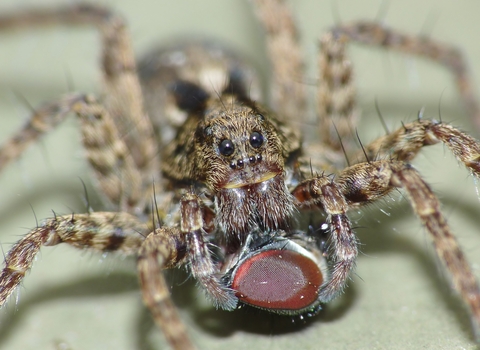
©Janet Packham
Wolf spider
The wolf spider can be found in a wide range of habitats, including the garden. It hunts down its prey, leaping on it just like a wolf. Spiders are beneficial neighbours, helping to manage garden pests.
Scientific name
Pardosa amentataWhen to see
March to JulySpecies information
Category
Statistics
Body length: 6-8mmCommon.
